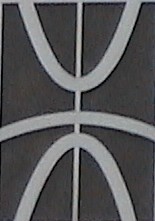After specialization in Langevin Laboratory (Ecole de Physik et Chemie, Paris) in 1937 young Nadjakov discovered the phenomenon of persistent internal photopolarization in sulphur crystals, which he called photoelectret. One year later Dr. Carlson in New-York, developed new photographic process, based on the illumination of sulphur, charged by corona discharge. Carlson called this new photographic process "xerography" .
In 1953, the author worked as graduate student in the laboratory of Shubnikov, academy member at that time. I used the photoelectret to obtain the latent image, formed by the distribution of internal polarization in electret. This latent image could be developed long time after polarization. I called this new photographic process "electrophotography".
In 1956, Nadjakov and Shubnikov organized the common scientific group and common research in this new field (My group and from Bulgaria: Kusev, Andreichin, Kashukeev, Antonov, Juskiselieva, Balabanov and many other scientists).
This common research gave the important contribution to the solid state physics and new photographic processes, based on the nonsilverhalide materials.
Today, working in other regions of the solid state physics (mainly on ferroelectric nanocrystals and nanothechnology), I remember this period as a very happy stage in my life as physicist, presenting me so many dear friends and recollections.
Professor Vladimir M. Fridkin
Institute of Crystalography, Russian Academy of Sciences, Moscow
fridkin@ns.crys.ras.ru
GEORGI NADJAKOV INSTITUTE OF SOLID STATE PHYSICS
Bulgarian Academy of Sciences
72 Tsarigradsko chaussee blvd.
BG-1784 Sofia, Bulgaria
Phone: +359 2 979 58 31;GSM +359 899 75 05 90
Fax: +359 2 975 36 32
E-mail: gkamish@issp.bas.bg
Skype: physmuseum
Created: 15 September 2006
Updated: 1 October 2015

